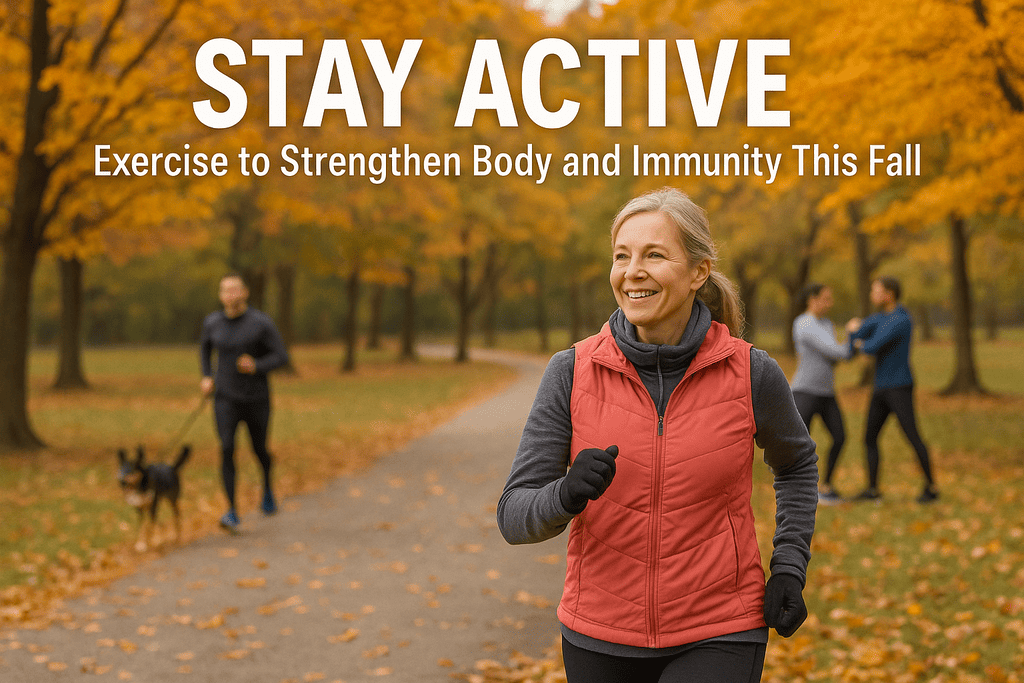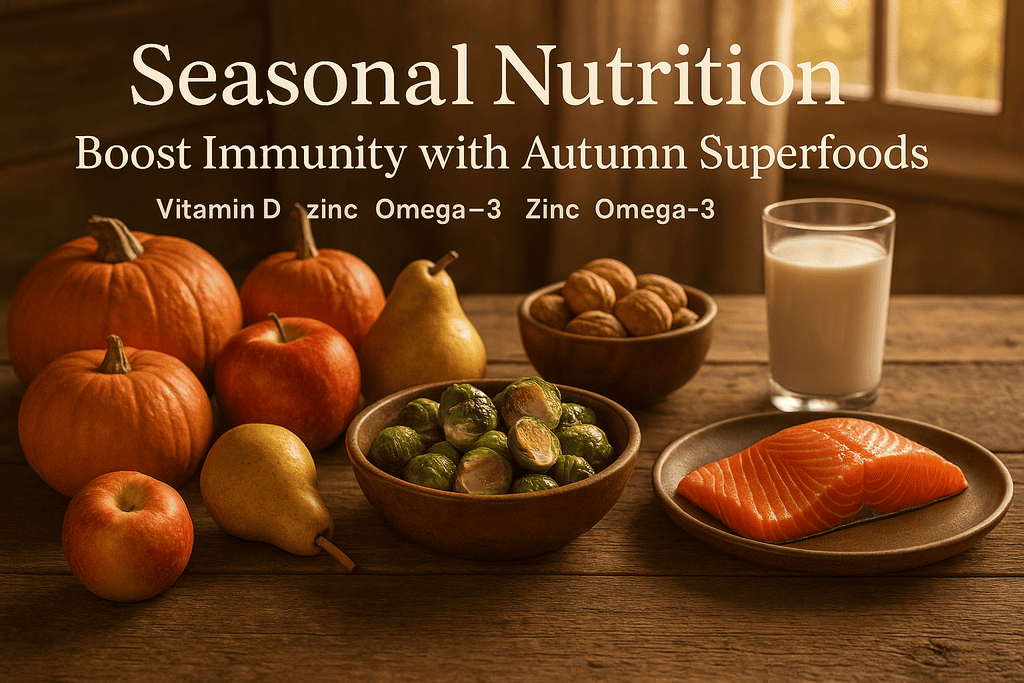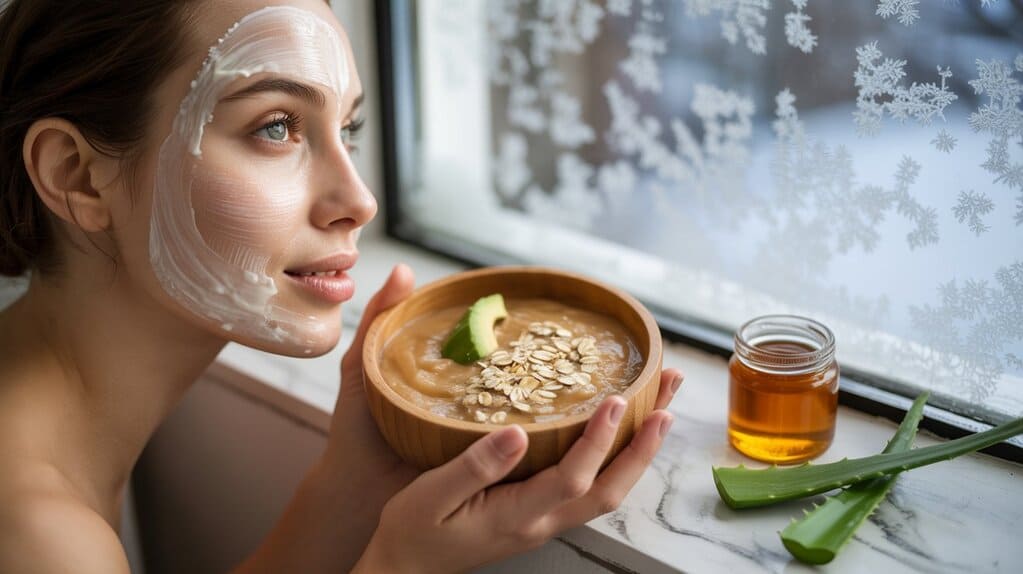
Introduction
As the days shorten and temperatures cool, autumn brings a natural opportunity to reset our habits and prepare the body for winter. Successful seasonal health strategies balance three pillars: nutrition, exercise, and rest. When combined thoughtfully, these elements support immune function, maintain mood and energy, and reduce risk of seasonal illness. This article offers an evidence-informed, SEO-friendly guide to staying healthy in autumn, drawing on recent research, public-health guidance, and clinical reviews from well-known experts and institutions.
Key points (at-a-glance)
- Get seasonal vaccinations (flu, updated COVID-19 where recommended) to reduce severe respiratory illness. CDC
- Maintain a balanced diet rich in vitamin C, zinc, iodine, omega-3s, and seasonal produce to support immune resilience.
- Prioritize regular moderate exercise (150 minutes/week moderate-intensity or equivalent), which modulates inflammation and supports immune balance. Frontiers
- Protect sleep and circadian rhythms; consider light therapy for people prone to seasonal mood changes (SAD). CNIB
- Use supplements strategically: vitamin D remains important for bone health and may help some at-risk groups — evidence about preventing respiratory infections is mixed and evolving. BMJ+1

Autumn Nutrition : Eat for Immunity and Warmth
Autumn foods can be delicious and functional. Focus on whole foods that provide vitamins, minerals, healthy fats, and fiber.
Nutrition checklist (what to emphasize):
- Vitamin C — citrus, kiwi, bell peppers, Brussels sprouts. Supports barrier function and immune cells.
- Zinc — oysters, lean meats, pumpkin seeds, legumes. Important for antiviral immune responses.
- Vitamin D — fatty fish, fortified dairy/plant milk, and sensible sun exposure; supplementation for at-risk people (elderly, low sun exposure). Evidence about vitamin D preventing respiratory infections is mixed: earlier meta-analyses suggested modest protection (especially for deficient people), but updated large meta-analyses have found smaller or no overall effect—so use supplements targetedly and under medical advice. BMJ+1
- Omega-3 fatty acids — oily fish, walnuts, flaxseed; help modulate inflammation.
- Fiber & polyphenols — whole grains, apples, pears, root vegetables, fermented foods to support the gut microbiome.
Table 1 — Sample Autumn Foods & Nutrients
| Nutrient / Benefit | Foods (Autumn-friendly) | Practical tip |
|---|---|---|
| Vitamin C (antioxidant) | Oranges, kiwi, red peppers, Brussels sprouts | Add roasted Brussels sprouts with citrus zest |
| Zinc (immune function) | Pumpkin seeds, chickpeas, lean beef, oysters | Sprinkle seeds on oatmeal or salads |
| Vitamin D (bone & immune) | Salmon, mackerel, fortified milk | Check levels if limited sun exposure |
| Omega-3s (anti-inflammatory) | Salmon, sardines, walnuts, flax | 2 servings oily fish/week or plant alternatives |
| Fiber / Polyphenols (gut health) | Apples, pears, oats, root veg | Make warm stews + a side of fermented vegetables |

Exercise in Autumn : Move Regularly, Safely, and Joyfully
Regular moderate-intensity exercise (brisk walking, cycling, light jogging, resistance training) supports cardiovascular health, helps regulate inflammation, and positively affects immune markers. Recent systematic reviews indicate that both acute and chronic exercise influence immune cell signaling and cytokines — chronic, moderate training tends to lower pro-inflammatory markers (e.g., TNF-α, IL-6) and raise anti-inflammatory signals (e.g., IL-10), especially after consistent programs in older adults. This helps maintain immune balance as seasons change. Frontiers
Practical autumn exercise tips:
- Keep outdoor walks: crisp air is excellent for mood and vitamin D synthesis on sunny days.
- Layer clothing for temperature control; warm up longer than in summer.
- Incorporate resistance and balance training twice weekly to maintain muscle and bone health.
- Avoid sudden increases in intensity—rapidly ramping up training can transiently suppress some immune responses.
Micro-workout idea: Three 10-minute sessions (morning walk, midday bodyweight circuit, evening stretch) add up and keep metabolism steady.

Rest, Sleep, and Circadian Health
Autumn’s shorter daylight can shift circadian rhythms and contribute to low mood or Seasonal Affective Disorder (SAD) in susceptible people. Evidence-based tools include light therapy (bright-light boxes in the morning), improved sleep hygiene, and cognitive-behavioral therapy for SAD when needed. Clinical overviews and reviews recommend early intervention and consistent morning light exposure to maintain circadian alignment and mood. CNIB
Sleep hygiene checklist:
- Keep consistent bed/wake times (±30 minutes).
- Morning sunlight exposure (15–30 minutes) when possible.
- Avoid screens 60–90 minutes before bed; wind down with reading or gentle stretching.
- If you notice persistent low mood, hypersomnia, or carbohydrate cravings in autumn/winter, consult a clinician about SAD and possible bright-light therapy.

Vaccines, Respiratory Illness Prevention, and Seasonal Planning
Autumn is the time to prepare for the respiratory virus season. Public health agencies recommend seasonal influenza vaccination and staying up-to-date with COVID-19 vaccinations per local guidance; some countries also recommend RSV immunization for specific groups. Vaccination reduces risk of severe illness, hospitalization, and death and is a core part of an autumn health plan. CDC
Other practical prevention steps:
- Practice regular hand hygiene and avoid close contact with symptomatic people when possible.
- Improve indoor air quality: ventilate rooms and consider HEPA filtration when gathering indoors.
- Keep a small “autumn kit” at home: thermometer, oral rehydration sachets, basic OTC medications, and supplies for remote work/rest if needed.
Supplements: Evidence and Practical Use
Supplements can be helpful for targeted deficiencies but are not substitutes for balanced living. Vitamin D supplementation remains important for bone health in groups at risk for deficiency. The evidence for vitamin D preventing respiratory infections has evolved—earlier meta-analyses suggested modest benefit, particularly for deficient people, while a 2025 large meta-analysis found a much smaller or non-significant overall effect. Clinicians now emphasize testing and personalized supplementation rather than blanket high-dose approaches. BMJ+1
When to consider supplements:
- If you have low measured serum 25(OH)D or limited sun exposure (elderly, indoor workers, high-latitude residents).
- If you have documented deficiencies in iron, B12, or other nutrients (test first).
- Use evidence-based doses (e.g., 600–800 IU/day for many adults as baseline recommendations varies by guideline) and avoid megadoses without medical advice.
Practical Autumn Program (7-point plan)
- Plan vaccinations: check with local health services for flu/COVID-19 timing. CDC
- Daily movement: aim for 30 minutes moderate activity most days + two strength sessions weekly. Frontiers
- Seasonal plate: half your plate vegetables/fruit, include oily fish twice weekly, whole grains, and fermented foods.
- Sleep routine: consistent schedule, morning light, limit evening screens; consult for SAD if symptoms arise. CNIB
- Targeted supplementation: test for vitamin D or other deficiencies; supplement under guidance. BMJ+1
- Hygiene & ventilation: prioritize handwashing, mask when needed, ventilate indoor spaces.
- Mental wellbeing: social contacts, outdoor time, and mindful practices (breathwork, journaling).
Conclusion
Autumn is an ideal season to tune your nutrition, exercise, and rest habits so you arrive at winter resilient and energized. The best strategy is integrated: eat seasonal, nutrient-dense foods; move regularly but sensibly; protect sleep and circadian health; and follow public-health guidance for vaccinations and respiratory-season planning. Scientific research continues to refine specific recommendations—examples include evolving evidence on vitamin D and respiratory infection prevention and growing meta-analyses on how exercise modulates immune markers—so personalizing your approach in consultation with healthcare providers is wise. By balancing these pillars you’ll support immune function, mood, and long-term health through the cooler months.
References (selected, authoritative)
- Centers for Disease Control and Prevention (CDC). Getting Your Immunizations for the 2024–2025 Fall and Winter Virus Season. NCIRD, U.S. CDC. (2024). CDC
- Jolliffe DA, Camargo CA, Sluyter J, et al. Vitamin D supplementation to prevent acute respiratory infections: systematic review and meta-analysis of stratified aggregate data. Lancet Diabetes Endocrinol. 2025 Apr. (Updated large meta-analysis; discusses limited overall protective effect). The Lancet
- Martineau AR, et al. Vitamin D supplementation to prevent acute respiratory tract infections: systematic review and meta-analysis of individual participant data. BMJ. 2017. (Earlier influential meta-analysis showing modest protection, especially in deficient individuals). BMJ
- Teodoro TH, Costa KPM, Prestes J, et al. The effects of acute and chronic exercise on immune markers of TH1/TH2 cells in older adults: a systematic review. Frontiers in Physiology. 2025. (Review of exercise-related immune modulation). Frontiers
- Munir S, et al. Seasonal Affective Disorder. StatPearls. NCBI Bookshelf. 2024. (Clinical overview of SAD and light therapy recommendations). CNIB





